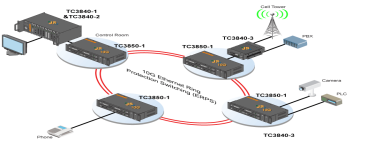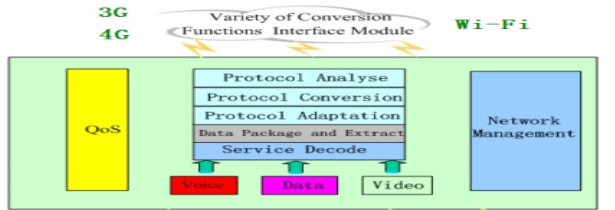Taking advantage of ample modern existing telecom network resources, lifelong learning may achieve rapid development and become popular gradu-ally in information society. The resources include the establishment of integrated rural information service platform, modern remote education center and electronic administration management platform for lifelong learning. The geographical and economic constraints should be overcome in order to structure the learning service support system which can provide technical support, information products and information service. It is important to develop an access platform based onIP technology, which supports multi-service access, so that it can implement a variety of types of mobile terminal equipment adapter access and reduce the restrictions on mobile terminal equipment.
Keywords: multi-service terminal adapter, mobile intelligent service, lifelong learning
In recent years, various lifelong learning service systems have been established in China. However, due to learning regions and the different of economic capabilities, lifelong learning needs are diverse. With the development of IT, how to use the advantages of mobile network in rural areas, for the purpose of improving existing mobile network information service further and providing personal-ized information for lifelong learning service, has been imminent.
Related Work
In the field of lifelong learning, information service, depending on users ‘economic conditions, are often different. There is an urgent need that terminal equipment could support different ways of information service (voice, data, video, etc.), which may access to the communications network through network mode adapters, as many as possible. The development of an access platform based on IP technology which supports multi-service access and achieves various mobile terminal equipment flexible adaptive access, can ease restrictions on mobile terminal equipment.
Mobile intelligent lifelong learning information service platform includes four layers: information resources layer, intelligent service layer, information control layer and mobile access layer. There are several telecommunications access methods which have used nowa-days, such as MSTP, ADSL, LAN, IPTV, CATV, Wi-Fi, WiMAX, HFC, GSM/GPRS, CDMA, etc. IP-based multi-service terminal adaptation layer locates at information control layer, which can effectively adapt abovementioned different modes and access terminals in a system with tructure shown in Fig. 1.

Fig. 1: Mobile Intelligent lifelong learning Information Service Platform Architecture
Implementation of Multi-service Terminal Adapter
IP network has many merits such as open, transparent, low-cost, highly flexible, more compatible with other service and quite suitable for rural application. With the ideal bandwidth, high speed (Tbit/s, Gbit/s) provided by IP technology, not only it can fulfill agricu l-ture mobile environment optimized data copy and synchronization, but also complete the various agriculture-related information and data security control through quality control QoS and network management, and concentrate control system. This will support personalized mobile agricultural information, customization and delivery, which need grade quality of telecommunication service, in order to achieve various agricultural information resources sharing.
Agricultural multiple terminal adapter system based on IP technology use three-tier structure:access layer, convergence and core layer and the application layer. After protocol analysis, protocol conversion, protocol adapter, unpacking, data extraction, decoding and media bridge, information is divided into voice, data and video service, and ulti mutely realizes a wide variety of business needs of end-sharing network. Based on this frame-work, an embedded integrated chip modules with core technology and appli-cation software is designed and developed. The specialty adapter equipment has a flexible, low-cost, powerful, high reliability and safety control functions.
This equipment will support voice ser-vice (VoIP POTS), data service (text, FTP, HTTP) and video service (multimedia, streaming media) etc., and it can provide multiple terminal adapters including: intelligent mobile phones, mobile PCs, iPad, and any smart terminals. It is widely used in agricultural production and life. The three-tier system configuration includes: access layer, convergence layer and application layer. The function of access layer is accessing various existing means of communication to the aggregation layer effectively, such as MSTP, ADSL, LAN, WLAN, IPTV, CATV, Wi-Fi, Wi-MAX, HFC, GSM, GPRS, CDMA.
After aggregation layer protocol adapter, unpacking, extracting, decoding, information is divided into voice, data and video service, and then connected to the application layer. Different service of QoS guarantee the quality control and complete network management and centralized control. IP-based agricultural multiple terminal adapter program is shown in the Fig. 2.
Conclusion
This paper introduces the development of small mobile equipment with multiple terminal adapter and interface module for various conversion functions using the existing mobile terminals common interface (3G, GSM air interface, the interface GPRS, CDMA intern acetic.). With this adapter conversion equipment, it is able to achieve the multi-mode adapting in various wireless communication network, the development of lifelong learning information machine, and implementing functions such as: voice, data, video transmission, any lifelong learning information, data copy and synchronization capabilities. That is why network resources integration and sharing can be fulfilled.

Fig. 2. IP-based multiple terminal adapter for lifelong learning
References:
- CNNIC, Statistical Report on Internet Development in China, January, 2011 [R], Beijing, 2011
- M.Yu, Y.Yi, J.Rexford, M. Chiang, Rethinking Virtual Network New Hybrid Network Traffic Prediction Method, IEEE Global Telecommunications Conference, 2010
- Xiaoru Wang, Junping Du, Jie Liu. A semantics based segmentation algorithm for scene images. IEEE Intern a-tional Conference on Cloud Computing and Intelligence Systems, Artif icial Intelligence,2011







